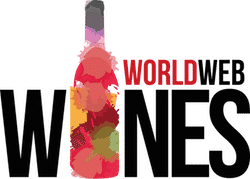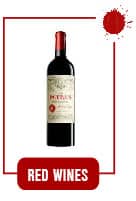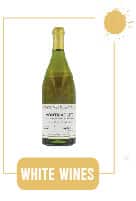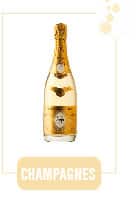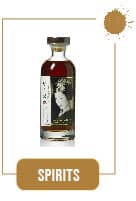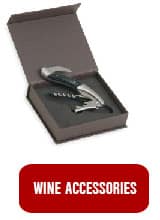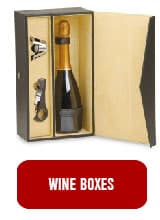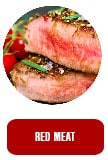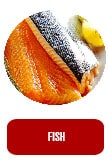No products
list of wineries
-
François Mikulski
Domaine François Mikulski: Exceptional Wines from Meursault in Burgundy
Domaine François Mikulski is a prestigious winery located in Meursault, in the Côte de Beaune region of Burgundy. Established in 1992, the domain quickly became renowned for producing exceptional white and red wines, primarily from the Chardonnay and Pinot Noir grape varieties.
History and Philosophy of Domaine François Mikulski
Founded in 1992 by François Mikulski, the domain began with a deep respect for Burgundy's rich heritage and a commitment to producing wines of great purity. François Mikulski's passion for creating wines that embody the elegance and authenticity of Burgundy's terroir has helped establish the estate as one of the region's most respected producers. The estate embraces sustainable and organic viticulture practices to ensure that its wines reflect both the environment and the region's history.
Sustainable Viticulture Practices
At Domaine François Mikulski, the focus is on environmentally friendly farming methods. The domain practices organic viticulture, using natural treatments and non-toxic inputs to maintain the health of the soil and vines. This commitment to sustainable practices allows the estate to produce high-quality organic wines while ensuring the preservation of the environment for future generations.
The Wines of Domaine François Mikulski: Meursault, Volnay, Pommard, Saint-Aubin
Domaine François Mikulski is particularly renowned for its Meursault wines, which are recognized for their richness and complexity. The estate also produces excellent red wines from prestigious appellations such as Volnay, Pommard, and Saint-Aubin. The Meursault wines are known for their flavors of yellow fruits, hazelnuts, butter, and toasted almonds, with a strong minerality that reflects the unique terroir of Meursault.
Flagship Wines of Domaine François Mikulski
- Meursault Clos du Pré de Manche: This exceptional white wine showcases the minerality and richness of Meursault's terroir, offering remarkable length and complex aromas of ripe fruit and white flowers.
- Meursault 1er Cru Les Genevrières: A top-tier Premier Cru that delivers an aromatic complexity with notes of yellow fruits, fresh butter, and an elegant, lingering finish.
- Crémant de Bourgogne: A refreshing sparkling wine with citrus aromas and a mineral, saline finish, perfect for festive occasions.
- Les Gouttes d'Or: A unique cuvée from specific Meursault parcels, offering an extraordinary aromatic richness with yellow fruit notes and a structured, elegant finish that lingers with minerality.
Commitment to Quality and Traditional Winemaking
Domaine François Mikulski adheres to traditional winemaking techniques, including pneumatic pressing and fermentation with indigenous yeasts. The wines are aged in oak barrels (15 to 30% of which are new), adding complexity and allowing the character of each terroir to shine through.
A Domain That Honors Tradition and Sustainability
Domaine François Mikulski is a prime example of organic and biodynamic wines in Burgundy. Their careful attention to vine cultivation and winemaking practices results in top-quality wines that truly reflect the essence of the Burgundy terroir.
-
Françoise et Denis Clair
The late Denis Clair made the reputation of this Domaine thanks to his formidable red-wine-making skills. The arrival of his talented son Jean-Baptiste, with his commitment to take the whites up to the level of the reds, has meant that the Domaine has now become pre-eminent also for its range of Saint-Aubins.
-
Franz Hirtzberger
For the last decades, no other name has impacted as profoundly on vinicultural activities in Spitz as Franz Hirtzberger’s.
Franz the second, who presides over the family’s 20 hectares of terraces since 1983, introduced a rigorous pursuit of high quality wines, which propelled the Hirtzberger vineyard into the very heart of the Wachau’s wine culture.
The names of Franz Hirtzberger’s terraces – the Singerriedel, Honivogl, Rotes Tor, Hochrain, Axpoint, Pluris and the Steinborz – are synonyms for the greatest wines of the region.
-
Fratelli Alessandria
At the northern edge of the Barolo zone, the sun-bleached, sandstone homes in the village of Verduno glow in the soft morning light. A cool breeze from the river Tanaro rustles the leaves of oak trees that border south-facing vineyards, soaking up the sun’s early rays.
The Alessandria family since the mid-19th century has called this gentle landscape home. In 1870, when the family first established their farm, calling it Fratelli Alessandria, Verduno was the center of Barolo winemaking—it was here where families first crafted dry Nebbiolo wines in the style we know today, and also bottled wines individually instead of shipping in cask. Because of this, the village was internationally recognized as the face of Barolo and sought out by collectors across the European continent.
Today Verduno is experiencing a renaissance, and it is the “brothers” Alessandria who are guiding the wines of Verduno back to the heights they once held. It is of course a family affair—the brothers Gian Battista and Alessandro, and Alessandro’s son, Vittore, are the stewards of this generations-old estate.
What Verduno gives is exactly what we crave in our Barolo wines: complexity without heaviness, structure with finesse. The Alessandria family provides a “mirror to the landscape,” Vittore says, respecting the history of their forefathers yet “looking ahead” to ensure that what’s in each bottle reflects the true essence of Barolo from Verduno.
-
Fratelli Corti
"The family business began as a small inn on a passage road and was active in the wine trade. Today the winery produces some of the greatest wines from Ticino and is also active in importing Italian wines. The winery is located in Mendrisio and the vineyards are spread between Morbio and Salorino in the Sottoceneri."
http://swissfinewine.ch/en/company/9485
-
Fratelli Tedeschi
Our family boast of an almost 4-century long history in the wine business and has always believed in the richness of Valpolicella wine production. We have reinterpreted it in a modern key and have adopted the most innovative production methods.
We respect and promote the area by producing powerful, elegant, typical wines that are rich in character.
Source: http://www.tedeschiwines.com/en/company/
-
Frederic Esmonin
Frédéric Esmonin is based at ‘Les Estournelles’ in Gevrey-Chambertin. Frédéric's father, André, was the highly respected Gevrey grower who produced the grand cru Mazis-Chambertin for the Hospice de Beaune.
Frédéric owns 17.5 acres including holdings of Gevrey-Chambertin ‘Clos-Prieur’ and the 1er Cru ‘Estournelles and Lavaux-St-Jacques’, as well as Mazis-Chambertin, and Ruchottes-Chambertin. His Clos de Vougeot and Chambertin are negociant wines.
-
Frédéric Savart
The Domaine of Frédéric Savart covers four hectares and is located in the Secteur of the village of Ecueil, Premier Cru of the Montagne de Reims.
A house of Champagne that happens to be a true pearl of prestige and high quality, where the conduct of the vineyard and winemaking is worthy of a work of goldsmith.
-
Friedrich Becker
The family owns more than 30 hectare and produces over 12,000 cases annually. Positioned on the very border with France in the town of Schweigen, the Beckers have witnessed that border shifting throughout history. Today, they have vineyards on both the French and German side, at the edge of the Palatinate forest—with 50 percent of their land situated on the French side in Alsace.
Their most prestigious vineyard is Kammerberg, a steep single vineyard on deep marl and limestone near Wissembourg, recovered by Fritz Sr. in 1967 . The old vines with mostly German clones and some French grow on deep marl lime soils that produce powerful but also refined, mineral-driven Pinot Noirs (it is all about the dirt here!); St. Paul cultivated in the 14th-century by the Cistercians of Wissembourg, which had since become overgrown but the Beckers uprooted trees and bushes in early 2000 and planted Spätburgunder; and Sonnenberg, with poor limestone soils ideal for growing Riesling.
-
Futo Estate
The Futo estate is located in the western hills of the Oakville appellation. There are five distinct estate vineyards that span more than half a mile along the hillside.
FUTO is the culmination of efforts to produce the finest Cabernet-based blend possible from our estate vineyards.
-
G.D. Vajra
he Vajra family has farmed Bricco delle Viole, the highest cru in Comune di Barolo, since the 1880s. At the young age of fifteen, Aldo Vajra embraced the dream to revive his family legacy. Displaying a vision and commitment belying his young age he took over the estate in 1968, turning a new page. Aldo soon acquired the first organic certification of the region (1971), created private biotype selections (selezioni massali) of Nebbiolo and Dolcetto, pioneered the renaissance of Freisa, a noble yet forgotten local grape (1980) and the cultivation of Rhine Riesling in Piemonte (1985).
Today, the family has 40 Ha under vine. The estate is steeped in tradition. Barolos are macerated for 20 to 30 days depending on the vintage. Wines are typically matured in large neutral Slavonian casks. The holdings in Bricco delle Viole are the prized vineyards of the estate, planted in 1949 by Aldo’s grandfather. It’s a very fresh terroir with open exposure and breezy conditions. Holdings in Barolo commune are: Fossati, Coste de Vergne and La Volta. Recently acquired vineyards in the commune of Sino (just outside Barolo DOCG, next to Serralunga) make a gorgeous Langhe Nebbiolo.
-
Gagliole
Gagliole is a small gem that captures all of Tuscany’s beauty.
The whole estate coverss 30 hectares; of these, 8 are under vine. Altitude is 500 metres, which is quite high by Chianti standards and helps keep freshness in the wines.
100 % in stock
All of our products are avalaible on stock
Quick delivery
Your order will be shipped in 48 hours in a packaging provided for this purpose
Free delivery
Free shipment fees for orders over 1000 CHF (in Switzerland)
Free pickup in Geneva
In order to avoid shipping fees, your order can be picked up directly in our cellars or shop in Geneva
Your fidelity rewarded
2 % off
